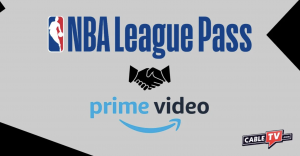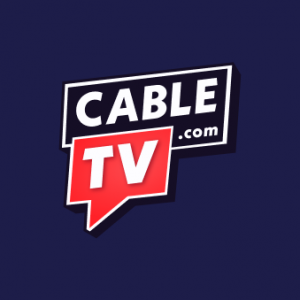CableTV.com Releases Fan Guide Detailing NBA League Pass Transition to Amazon Prime Video
NBA League Pass is exclusively available through Amazon Prime. Here is everything you need to know.
Getting NBA League Pass as a Prime Video subscriber will be a piece of cake. You’ll just log into your Amazon account, navigate to the sign-up page, and pick whichever plan you like.”
DRAPER, UT, UNITED STATES, October 21, 2025 /EINPresswire.com/ -- CableTV.com today announced the publication of a fan guide and industry briefing that explain how the NBA League Pass distribution model is changing as Amazon Prime Video becomes the designated third-party channels store for League Pass in key markets. The editorial report summarizes what is confirmed by providers and league communications for the 2024–2025 and 2025–2026 periods, what remains unchanged for fans and commercial venues, and what additional developments are expected as the season approaches. The guide is designed to help readers understand subscription routes, blackout policies, device considerations, and how national windows on multiple platforms intersect with out-of-market access through NBA League Pass.— Alex Vejar
The new briefing centers on the following development: NBA League Pass access via a third-party channels storefront is moving to Amazon Prime Video, with Prime Video identified as the destination where customers can obtain the out-of-market package through a digital channels experience. The guide describes this role and clarifies that the change affects channels-store distribution rather than the existence of League Pass itself. The document also tracks public updates issued by virtual multichannel video programming distributors during late 2025 regarding League Pass availability on those platforms and explains the distinction between virtual bundles and traditional satellite or cable providers.
The fan guide explains that NBA League Pass remains focused on out-of-market games and that blackouts continue to apply when contests air on national telecasts or on regional networks within a viewer’s home territory. The editorial team summarizes the service’s core function, including live out-of-market matchups and on-demand replays, and outlines how bundled access to NBA TV may appear within certain League Pass tiers. The body of the report highlights that blackout rules are unchanged and that fans in a club’s home market continue to rely on national partners and applicable regional telecasts for live coverage when blackouts apply to League Pass.
The report also captures the status of national game windows on Prime Video and how those exclusives will coexist with established partners. According to the guide, Prime Video has outlined plans to carry a defined slate of regular-season games and in-season or postseason events within a broader national rights framework that also includes ESPN/ABC and NBC/Peacock. The brief frames these national windows as complementary to the out-of-market inventory available through NBA League Pass, while reminding readers that national telecasts remain subject to blackout protections across platforms.
To help readers interpret announcements from live TV streaming bundles, the guide aggregates consumer-facing notices about League Pass availability and states how those updates relate to the Prime Video channels-store arrangement. The analysis distinguishes between virtual bundles, which are affected by channels-store exclusivity, and traditional multichannel providers that may offer separate mechanisms for League Pass access on linear or satellite infrastructure. The editorial team presents these distinctions to prevent confusion between a service’s live TV bundle and the channels-store marketplace where premium add-ons are sold à la carte.
The publication includes a section directed to commercial venues that routinely show professional basketball. Bars, restaurants, and other hospitality locations generally obtain programming through business-class satellite or cable accounts designed for commercial exhibition. The guide notes that those commercial routes operate outside the consumer channels-store ecosystem and therefore are evaluated separately from residential streaming shifts. The brief encourages venue operators to verify access to national partners and relevant regional sports networks in their service footprints and to confirm that business accounts are configured for the applicable game windows.
The report outlines device readiness considerations in a neutral, non-directive format. It states that fans who plan to access NBA League Pass through Amazon Prime Video should ensure that Prime Video applications are available on preferred compatible devices, including smart TVs, streaming media players, and game consoles, and that account credentials align with the intended plan tier. Where applicable, the guide references platform features such as multiview or highlight navigation, emphasizing that these features are subject to change as platform roadmaps evolve during the season.
Content organization within the guide prioritizes clarity around plan structure. The briefing references multiple plan labels, describes the general differences between base, premium, and team-specific options, and notes that NBA TV is associated with certain tiers. The document also summarizes the stream count and presentation differences that commonly separate plan levels, while reminding readers that plan names, features, and prices can differ by platform, region, and promotional period and should be validated at the point of purchase.
The blackout section of the guide provides definitions and examples to clarify how national and local protections interact with out-of-market access. It explains that national telecasts on ESPN/ABC, NBC/Peacock, or Prime Video supersede League Pass access during those windows, while regional network telecasts control in-market broadcasts. The guide recommends that readers cross-reference local ZIP codes and national schedules when planning multi-team viewing nights, particularly early in the season when national doubleheaders or in-season tournament rounds may cluster across the week.
The analysis addresses viewer expectations shaped by recent streaming experiences, particularly multiview and catch-up options. The guide explains that platform innovations continue to evolve, including customizable multiview layouts, highlight timelines, or context-aware navigation, and that viewers can expect continued iteration as platform providers work through production and rights considerations during high-traffic nights. The report frames these features as part of broader industry efforts to integrate live sports presentation with interactive viewing modes.
The briefing includes a neutral recap of what is known and what remains pending. Known elements include the channels-store role for Amazon Prime Video, the continued function of NBA League Pass as an out-of-market service with blackout rules, and the presence of national game windows on Prime Video within a multi-partner ecosystem. Items subject to further updates include detailed season-by-season schedules of national exclusives, feature rollouts by platform during the season, and changes in plan naming or bundling as distributors refine their offerings ahead of opening night.
The report offers context for households that follow multiple teams across different markets. For national marquee nights, the guide emphasizes the importance of understanding which games are classified as national exclusives and which remain eligible for out-of-market streaming through NBA League Pass. For weeks featuring play-in or in-season tournament rounds, the guide suggests attention to format-specific windows that may alter typical regional availability or introduce rotating exclusivity across partners.
The section directed at traveling viewers explains that plan features sometimes include offline viewing options on supported devices and that such features are typically associated with specific plan tiers. The guide notes that activation and download functionality vary by platform and that devices should be provisioned in advance of travel if offline viewing is a priority. The briefing treats these features as convenience options rather than core changes to League Pass distribution.
For readers assessing budget and plan selection, the guide compares the general differences between a team-specific option and full-league coverage. A team-specific plan may serve dedicated fans who primarily follow a single out-of-market club, while broader tiers may appeal to households that track multiple teams or prefer a deeper on-demand library. The report reiterates that the presence of NBA TV within certain packages can affect value calculation for viewers who also watch shoulder programming and league-wide studio content.
The editorial team also compiled provider communications and customer-facing notices into a timeline of updates surrounding the 2025–2026 season transition. The guide records the dates when virtual live TV providers stated that League Pass would not be offered within their bundles and correlates those statements with the channels-store role assigned to Prime Video. By consolidating these notices in one place, the report aims to reduce consumer confusion that can arise when product pages and help centers are updated on different schedules across providers.
The publication concludes with a set of practical takeaways stated in third-person, non-directive language. Fans who plan to follow out-of-market teams can review NBA League Pass enrollment paths inside the Prime Video Channels store, confirm blackout expectations for local and national telecasts, and organize device access in line with selected tiers. Households that follow national showcase nights can map Prime Video’s exclusive windows alongside ESPN/ABC and NBC/Peacock schedules to anticipate where games will appear during the week. Commercial venues can continue to work through business-class satellite or cable accounts outside the consumer channels environment.
The fan guide and industry briefing emphasize clarity, verification, and the separation between consumer channels-store distribution and commercial exhibition. By documenting confirmed elements of the transition and clearly identifying areas awaiting further season-specific confirmation, the report is intended to support informed viewing decisions without prescriptive marketing language. The editorial team will continue monitoring distributor updates and league communications for changes that affect plan names, pricing, features, or national assignments within the broader rights landscape.
The complete guide appears as a service to readers who track developments in live-sports distribution and want a single reference describing how NBA League Pass fits into the 2025–2026 viewing ecosystem. In keeping with CableTV.com’s editorial approach, the publication synthesizes provider notices, rights-holder communications, and platform feature descriptions to create a concise, neutral map of where out-of-market games, national windows, and commercial exhibition paths converge during the upcoming season.
Craig Stirland
CableTV.com
+1 801-708-0318
email us here
Visit us on social media:
LinkedIn
Bluesky
Instagram
Facebook
YouTube
TikTok
X
Legal Disclaimer:
EIN Presswire provides this news content "as is" without warranty of any kind. We do not accept any responsibility or liability for the accuracy, content, images, videos, licenses, completeness, legality, or reliability of the information contained in this article. If you have any complaints or copyright issues related to this article, kindly contact the author above.


